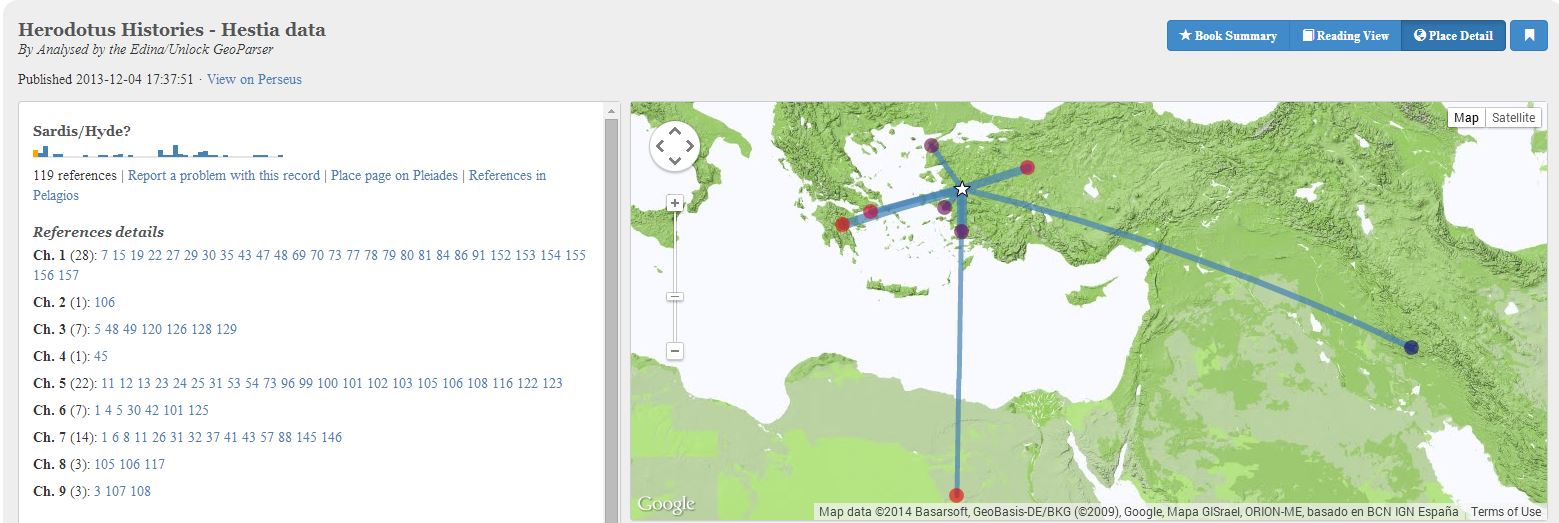This is the second of three posts reporting on the deployment of the Hestia toolkit to teach Herodotus’ Histories in two college classrooms at The University of Texas at Austin. This post describes the integration of Hestia resources in the design of an upper-division research seminar intended for Ancient History, Classics, and Classical Archaeology majors. The seminar took the first four-and-a-half books of the Histories as a platform from which to explore historiography, ethnography, archaeology, and network analysis. The third and final post will discuss the successes and failures of this class from the perspectives of both students and instructor.
Adding the Hestia narrative timemap of Herodotus’ Histories to a large lecture course on Ancient Greece in the fall of 2013 was fairly straightforward. The interface itself was already in place, and had been finalized and stable for several years; it worked without any surprises. The course already covered Herodotus, and previous iterations already emphasized the work’s spatial aspect by requiring the Landmark edition and including map quizzes. Thus existing Hestia resources were layered onto an existing course, with minor adjustments to encourage the students to use them (see my previous post). I found this to be a useful experiment, but it fell far short of demonstrating the potential of the Hestia toolkit for student research and exploration. For students in the lecture course, the narrative timemap was still a platform for consumption, and I think that this explains their somewhat lukewarm response. As I argued in the previous post, real engagement with innovative digital resources is more likely to come when students are makers, not just users.
Read More»






